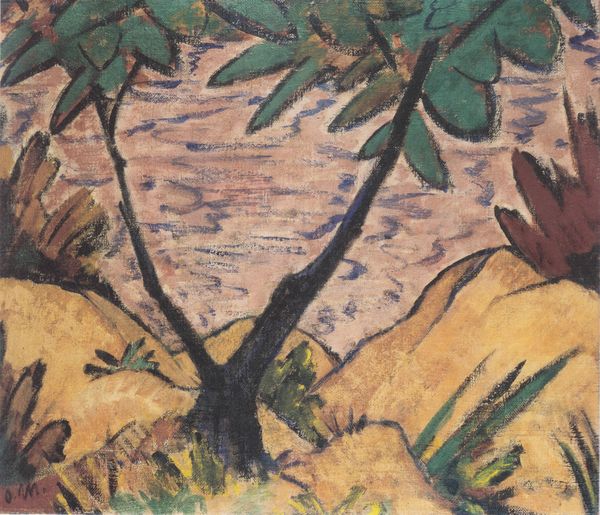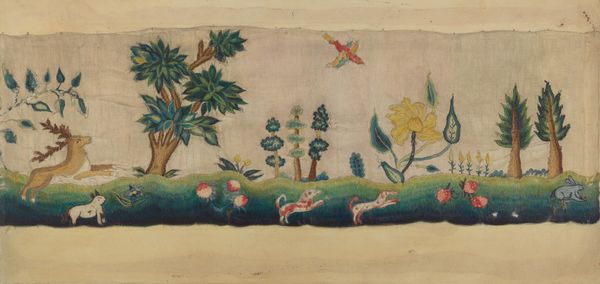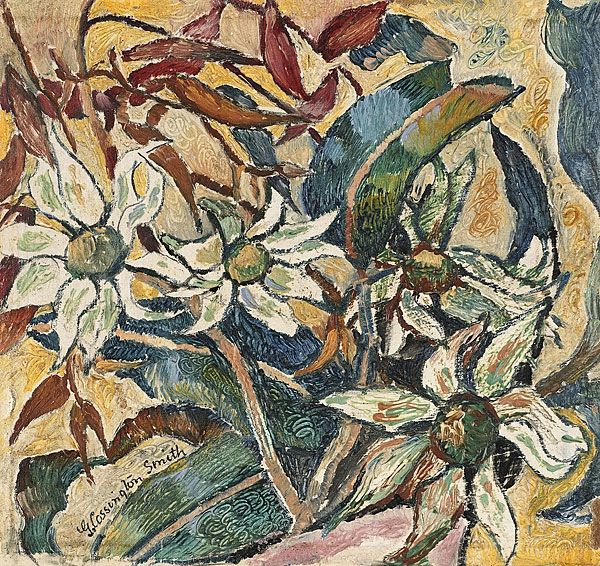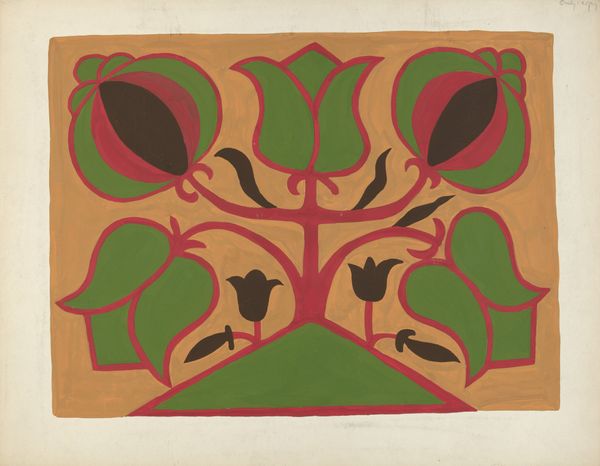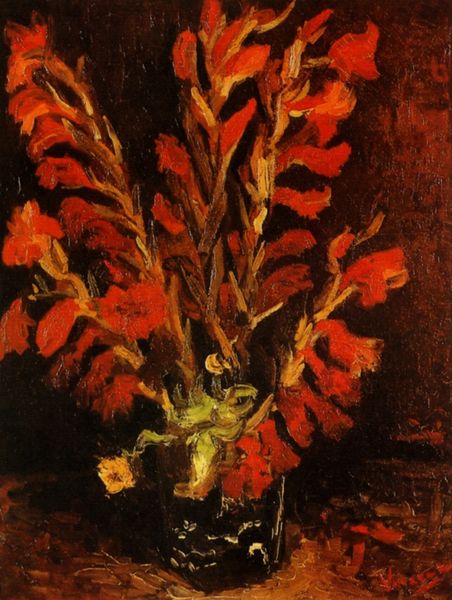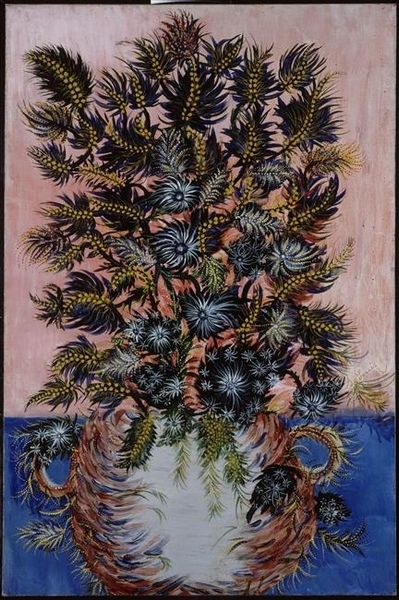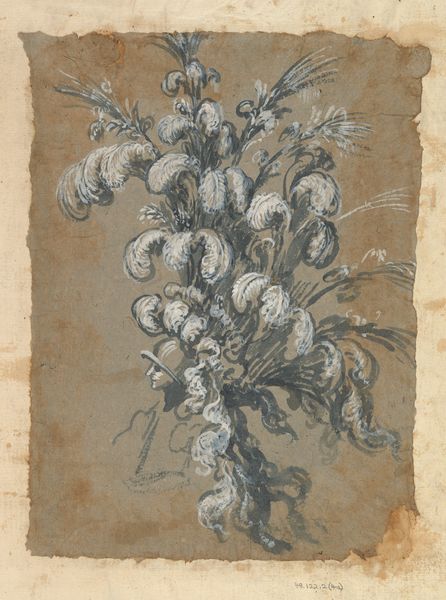
Dimensions: sheet: 31.75 × 41.91 cm (12 1/2 × 16 1/2 in.)
Copyright: National Gallery of Art: CC0 1.0
Curator: Looking at "Sumac," a print by Ray Euffa dating to 1946, I’m struck by its earthy tones and organic forms. What catches your eye? Editor: Immediately, I’m drawn to the bold, almost assertive presence of the sumac itself. Those upright, cone-shaped seed heads feel like visual exclamation points amid the swirling, softer foliage. Curator: Indeed. I find the composition fascinating because it blends naturalism with a certain stylized abstraction. The plants are recognizable, but the use of watercolor and coloured pencil creates a dreamy, impressionistic feel. There is a flattening of depth too, which was something of a theme in landscape imagery post-WWI. Editor: You’re right, there's a strong tension between representation and symbolic form here. Do you think Euffa intentionally worked with the symbolic connotations of sumac— its resilience, its association with autumn and decline, yet also its vibrant colour? Or might we see this more as a decorative, post-war pastoral, a celebration of American nature perhaps? Curator: The ambiguity might be precisely the point. The symbol is less a fixed marker than a mood. Sumac can speak to both endurance and melancholy, fitting perhaps for a country adjusting to a new global role after immense sacrifice. I am unsure this artwork had an initial sociopolitical ambition or association, and can see the point that you mentioned earlier: the intention of the image could have been a celebration of American Nature after great adversity, the sumac coming into being like phoenix from the ashes. Editor: So, rather than prescribing meaning, it seems Euffa is inviting the viewer to contemplate those ideas— resilience, reflection, or indeed nature itself, its cyclical changes that were only being compounded further by pollution following the world war. Curator: Exactly. That invitation, the space for interpretation, is where the lasting power resides. It doesn't give you an answer. It offers a prompt to think and, feel... I will have to study the relationship with sumac's resilience and its ability to represent that theme post WWII, and its potential role for Americana visual codes. Editor: And perhaps the way those colours subtly speak to nature itself as something deeply comforting, yet capable of inflicting terrible, mortal change... it's interesting, definitely something to chew on, isn't it?
Comments
No comments
Be the first to comment and join the conversation on the ultimate creative platform.
